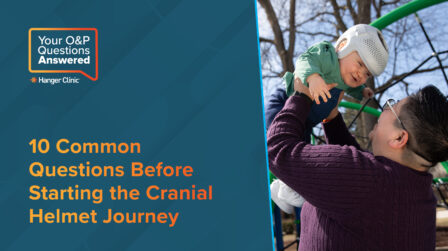Understanding Torticollis
Congenital muscular torticollis is a tightness of one of the muscles in the neck which is present at birth. The tightening of the neck muscle (the sternocleidomastoid muscle) causes the child’s head to tilt to one side and rotate to the opposite side at rest.
Signs & Symptoms
Torticollis is usually diagnosed within the first 2-8 weeks of life as babies begin to develop head control. Some typical signs of torticollis may be that the baby:
- Shows a preference to one head position shortly after birth
- Has a hard time feeding on one side
- Has developed flatness on the back of the head as a result of the preferred position
Diagnosis & Treatment
When diagnosed at an early age, torticollis can often be treated with physical therapy and a home exercise program. A physical therapist will stretch the baby’s neck to improve the tightness of the neck muscles. If torticollis is untreated, significant head shape changes can develop as it can limit efforts in repositioning and normal development.
In the case of persistent torticollis or torticollis diagnosed at a later age, a neck brace (cervical orthosis) can be prescribed to keep the head in a corrected position. When torticollis causes head shape changes, a cranial remolding orthosis (or helmet) may be needed.
Plagiocephaly and Torticollis: Why Ava Wears a Helmet
At just 1-month old, Leneé Vet noticed a flat spot on the back of baby Ava’s head. Shortly thereafter, she was diagnosed with plagiocephaly and torticollis. With the help of a cranial helmet and her care team, Ava’s head is gradually growing into a more symmetrical shape.

Latest Updates
Subscribe to stay up-to-date on our latest posts.


